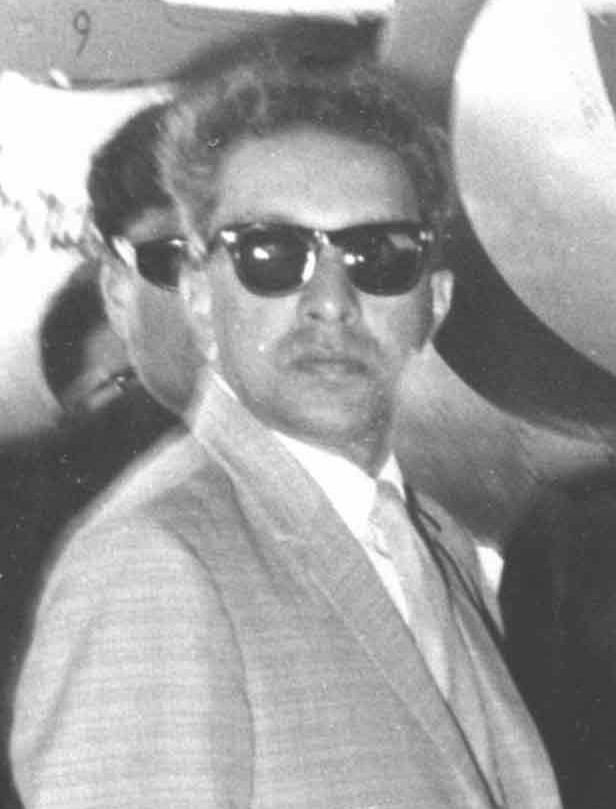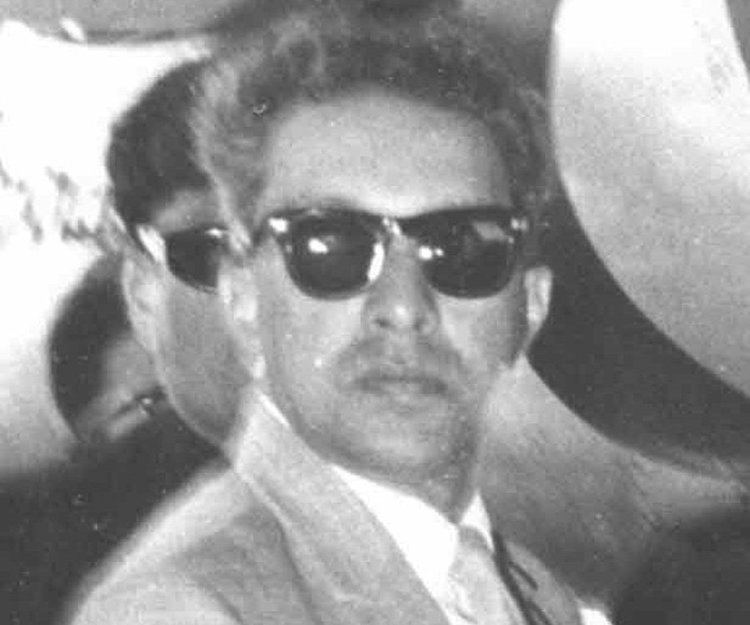Coronation 2 May 1956 Name Mahendra Nepal Predecessor Tribhuvan Role King of Nepal | Successor Birendra Education Eton College Dynasty Shah dynasty | |
 | ||
Reign 13 March 1955 – 31 January 1972 Born 11 June 1920
Narayanhity Royal Palace,Kathmandu, Nepal ( 1920-06-11 ) Issue Princess Shanti
Princess Sharada
King Birendra
King Gyanendra
Princess Shobha
Prince Dhirendra Died January 31, 1972, Bharatpur, Nepal Spouse Queen Ratna of Nepal (m. 1952) Siblings Prince Basundhara of Nepal, Prince Himalaya of Nepal Children Birendra of Nepal, Gyanendra of Nepal Similar People Birendra of Nepal, Gyanendra of Nepal, Tribhuvan of Nepal, Dipendra of Nepal, Aishwarya of Nepal | ||
London - State Visit Of The King and Queen Of Nepal - 1960
Mahendra Bir Bikram Shah Dev (Nepali: महेन्द्र वीर विक्रम शाह; 11 June 1920 – 31 January 1972) was King of Nepal from 1955 to 1972.
Contents
- London State Visit Of The King and Queen Of Nepal 1960
- Early life
- Reign
- 1960 Coup dtat
- Rule in Panchayat System 196072
- British Field Marshal
- King Mahendra and Queens visit to USA in 1967
- Death and survivors
- Titles and honours
- References

Early life

Mahendra was born 11 June 1920 to King Tribhuvan Bir Bikram Shah of Nepal. Although Tribhuvan was nominally king since 1911. Mahendra was captive in Narayanhity Royal Palace, virtually a gilded cage. In 1940 he married Indra Rajya Laxmi Devi, daughter of General Hari Shamsher Rana. They had three sons, Birendra, Gyanendra, Dhirendra and three daughters Shanti, Sharada, and Shobha. Crown Princess Indra died in 1950. In 1952, Mahendra married Indra's younger sister, Ratna Rajya Laxmi Devi. This marriage produced no children. Meanwhile, popular discontent and the British withdrawal from India in 1947 had made Rana rule increasingly untenable. In 1950 the political situation had deteriorated so far that the personal safety of the royals was in doubt. Tribhuvan and most of his family escaped to India. Open revolt ensued and by the end of the year the Ranas agreed to a coalition government under Tribhuvan in which they shared power equally with the Nepali Congress Party. By the end of the year the Ranas were maneuvered out and Nepal's first experiment with democratic government under constitutional monarchy was underway. Tribhuvan's health was poor and he died in 1955.
Reign

Mahendra succeeded Tribhuvan as King of Nepal. He was crowned on 2 May 1956.
1960 Coup d'état
On 15 December 1960, the then King Mahendra suspended the constitution, dissolved the elected parliament, dismissed the cabinet, imposed direct rule and imprisoned the then prime minister Bishweshwar Prasad Koirala and his closest government colleagues. Mahendra instituted a Panchayat hierarchical system of village, district and national councils, a variant of guided democracy. He pursued a foreign policy of neutrality between China and India.
Rule in Panchayat System (1960–72)
In 1960, King Mahendra used his emergency powers and took charge of the State once again claiming that the Congress government had fostered corruption, promoted party above national interest, failed to maintain law and order and ‘encouraged anti-national elements’. Political parties were outlawed and all prominent political figures, including the Prime Minister were put behind bars. Civil liberties were curtailed and press freedom muzzled. King Mahendra, then, through an ‘exercise of the sovereign power and prerogatives inherent in us’ promulgated a new constitution on December, 1962 introducing a party-less Panchayat system. The political system (Panchayat System) was a party-less "guided" democracy in which the people could elect their representatives, while real power remained in the hands of the monarch. Dissenters were called anti-national elements.
The Panchayat System was formulated by King Mahendra after overthrowing the first democratically elected government and dissolving the parliament in 1960. On 26 December 1961, King Mahendra appointed a council of 5 ministers to help run the administration. Several weeks later, political parties were declared illegal. At first, the Nepali Congress leadership propounded a non-violent struggle against the new order and formed alliances with several political parties, including the Gorkha Parishad and the United Democratic Party. Early in 1961, however, the king had set up a committee of 4 officials from the Central Secretariat to recommend changes in the constitution that would abolish political parties and substitute a "National Guidance" system based on local panchayat led directly by the king.
Mahendra implemented a land reform policy, which provided land to many landless people. The Mahendra Highway (also called East-West Highway) that runs along the entire Terai belt in southern Nepal was constructed during his reign. He launched the Back to the Village National Campaign in 1967 which was one of his largest rural development efforts. He also played a key role in making Nepal a member of the United Nations in 1955.
British Field Marshal
King Mahendra was appointed as a British Field Marshal in 1960.
King Mahendra and Queen's visit to USA in 1967
King Mahendra and the Queen Ratna were greeted by the then President of USA, Lyndon B Johnson and Mrs. Johnson in Washington DC in 1967. The royal couple of Nepal was greeted with the 'guard of honor'.
Death and survivors
Mahendra suffered a heart attack while hunting in Chitwan with Tiger Tops Hotel proprietor John Coapman, also associated with the CIA at the time, who reported in 1977 that Mahendra died in his arms after eating dinner "on shikar" and died 31 January 1972 in Bharatpur.
His son Birendra assumed the throne on 24 February 1975 but perished in the Nepalese royal massacre on 1 June 2001.
